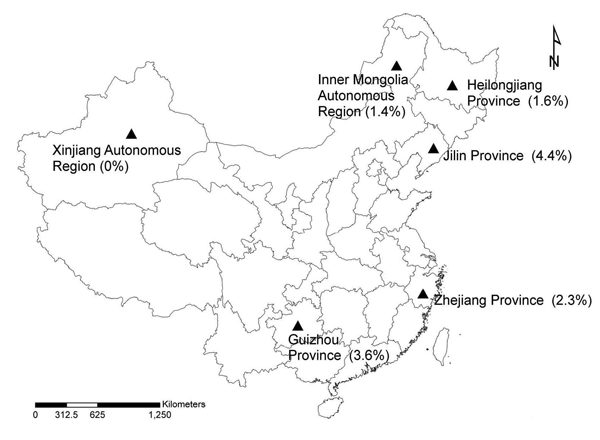Volume 15, Number 12—December 2009
Research
Tick-borne Agents in Rodents, China, 2004–2006
Figure

Figure. Study sites (triangles) in the People’s Republic of China where rodents were collected, 2004–2006. Numbers in parentheses are co-infection rates of rodents with 2 or 3 tick-borne agents.
1These authors contributed equally to this article.
Page created: June 16, 2011
Page updated: June 16, 2011
Page reviewed: June 16, 2011
The conclusions, findings, and opinions expressed by authors contributing to this journal do not necessarily reflect the official position of the U.S. Department of Health and Human Services, the Public Health Service, the Centers for Disease Control and Prevention, or the authors' affiliated institutions. Use of trade names is for identification only and does not imply endorsement by any of the groups named above.